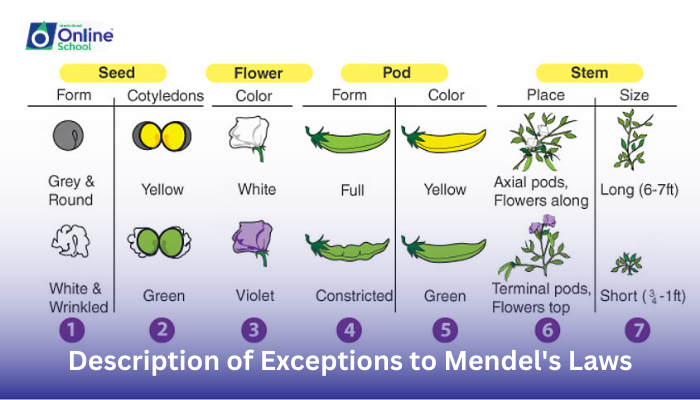
Learning Outcomes:
i. Identify and describe some key exceptions to Mendel's laws of inheritance.
ii. Explain the concept of gene interaction and its role in modifying trait expression.
iii. Differentiate between incomplete dominance and codominance as examples of non-Mendelian inheritance.
iv. Appreciate the complexity of genetic inheritance and the value of exploring exceptions to understand the full spectrum of how traits are passed down.
Introduction:
Imagine a world where everything followed a perfect script, where apples were always red and peas always round. This, however, is not the reality of genetics. While Mendel's laws laid the foundation for our understanding of inheritance, there are certain cases where genes refuse to follow the predictable dance he described. In this lesson, we'll peek behind the curtain of Mendel's magic and explore some fascinating exceptions that reveal the true complexity and beauty of genetic inheritance.
i. The Dance Gets Complicated: Gene Interaction
Think of genes like actors in a play. While they may perform individually, their interactions with each other can create unexpected outcomes. This is the essence of gene interaction, where the combined effect of two or more genes on a single trait deviates from the simple ratios predicted by Mendel's laws. Imagine mixing two different shades of paint – you might not get a simple blend, but a unique color influenced by the interplay of both pigments.
ii. Beyond Black and White: Incomplete Dominance
Not all traits follow the clear-cut dominant-recessive model. In incomplete dominance, neither allele completely masks the other, resulting in a blended phenotype somewhere between the two parental expressions. Think of mixing red and white paint – you get pink, a new shade created by the interaction of both colors. This is different from Mendel's law, where the dominant allele usually hides the recessive one completely.
iii. Sharing the Spotlight: Codominance
Sometimes, in a genetic duet, both alleles take center stage. Codominance occurs when neither allele is dominant, and both contribute to the phenotype in a distinct and recognizable way. Imagine mixing red and yellow paint – you don't get orange, you get a mix of red and yellow dots, each color equally visible. This again challenges Mendel's concept of single dominant and recessive alleles.
iv. Embracing the Unexpected: The Value of Exceptions
Understanding exceptions to Mendel's laws is not about discrediting his groundbreaking discoveries; it's about expanding our understanding of the intricate tapestry of inheritance. These exceptions reveal the limitations of simple models and highlight the complex ways in which genes interact to influence our traits. By exploring these nuances, we gain a deeper appreciation for the diversity of life, the adaptability of organisms, and the ongoing journey of unraveling the mysteries hidden within our DNA.
Mendel's laws remain a cornerstone of genetics, providing a framework for understanding inheritance patterns. However, recognizing the exceptions is equally important. By venturing beyond the predictable script of Mendel's magic, we discover a world of genetic interaction, blended phenotypes, and shared spotlights, where genes tango in a complex dance to create the unique symphony of life. Remember, the beauty of inheritance lies not just in the predictable patterns, but also in the unexpected twists and turns that reveal the true richness and adaptability of the genetic code that shapes each and every one of us.